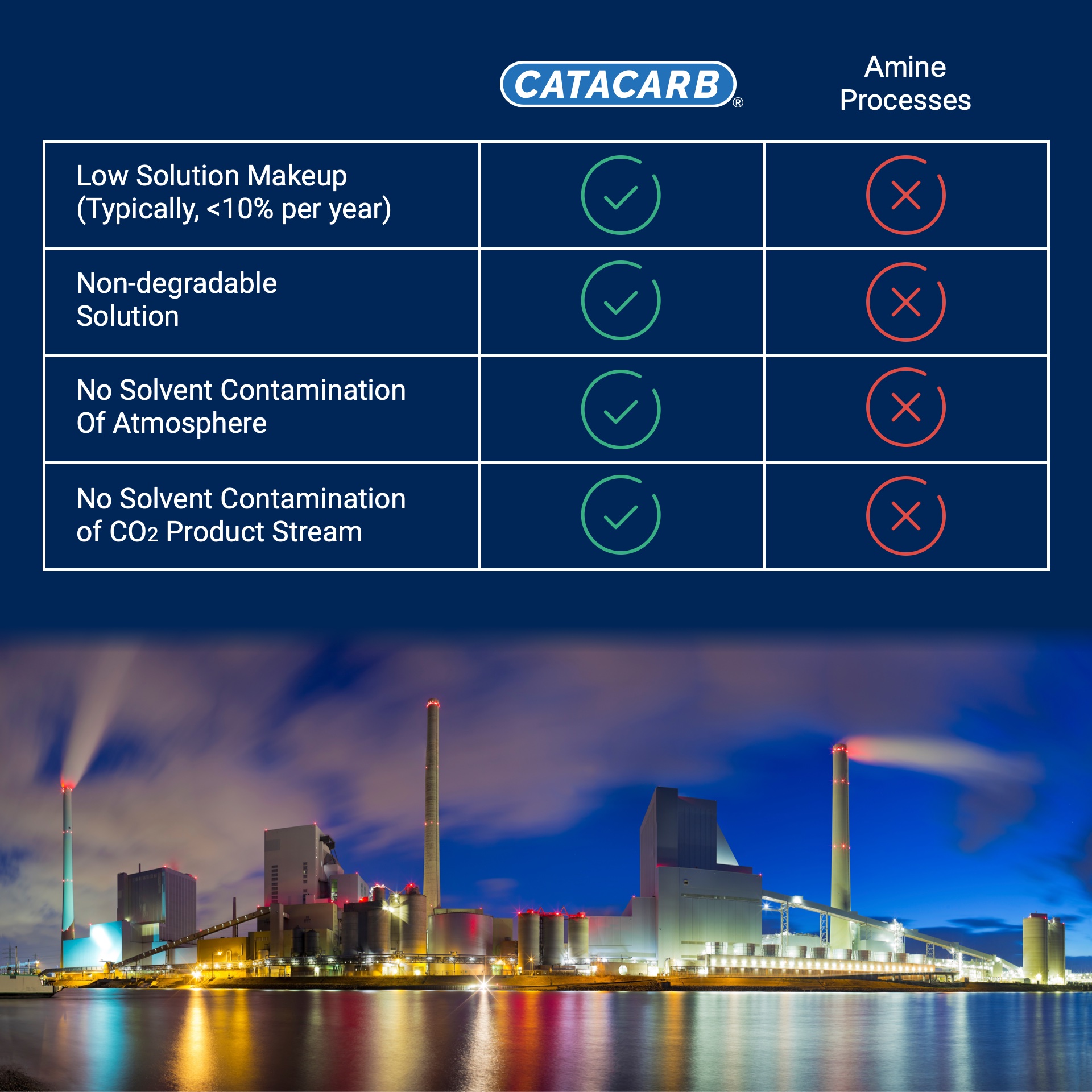CATACARB® units capture up to 44,000 Kilotons of CO2 yearly.
CATACARB® units capture up to 44,000 Kilotons of CO2 yearly.
CARBON CAPTURE AND UTILIZATION/SEQUESTRATION (CCUS)
CARBON CAPTURE AND UTILIZATION / SEQUESTRATION (CCUS)
Many companies are committing to reducing their carbon dioxide (CO2) emissions to combat climate change. This often requires capturing CO2 from waste gases before they are vented to the atmosphere.
Continuously improved over 60 years, the CATACARB Process offers an efficient, reliable, and environmentally responsible method for capturing 99.9% pure CO2 without modification to upstream technologies. Furthermore, our design experience lets us tailor the CATACARB Process to specific applications, such as replacing 80% of heat requirements with electrical demand.
The CATACARB Process is a hot potassium carbonate (HPC) CO2 removal process in which CO2 is chemically absorbed under pressure in an absorption tower by a solution of potassium carbonate dissolved in water. The solution is subsequently sent to a separate tower where it is stripped of absorbed CO2 with steam, and the cycle continues. Using a minor proportion of our inorganic catalyst, we improve CO2 stripping and absorption efficiencies over the base HPC process by more than 40%.
Prioritizing Health and Environment
Prioritizing Health and Environment
With our CATACARB inorganic catalyst, the HPC solution is non-volatile and doesn’t further pollute the treated gas stream before release to atmosphere, nor does it contaminate the pure CO2 product. The HPC solution is also non-degradable, eliminating the need for continuous solution makeup. In fact, solution makeup is typically less than 10% per year for our clients using our inorganic catalyst.
The result is an environmentally responsible option compared to Amine processes, which require regular solution makeup and emission of organic compounds that pose environmental and health risks.

CATACARB is Capsol Technologies’ preferred provider for HPC design. Capsol Technologies specializes in end-to-end solutions, from compression to liquification, for End of Pipe Carbon Capture. Utilizing CATACARB means your project will meet guarantees by leveraging decades of experience and data.
Copyright © CATACARB All Rights Reserved | Sitemap | Website By Three Vistas



